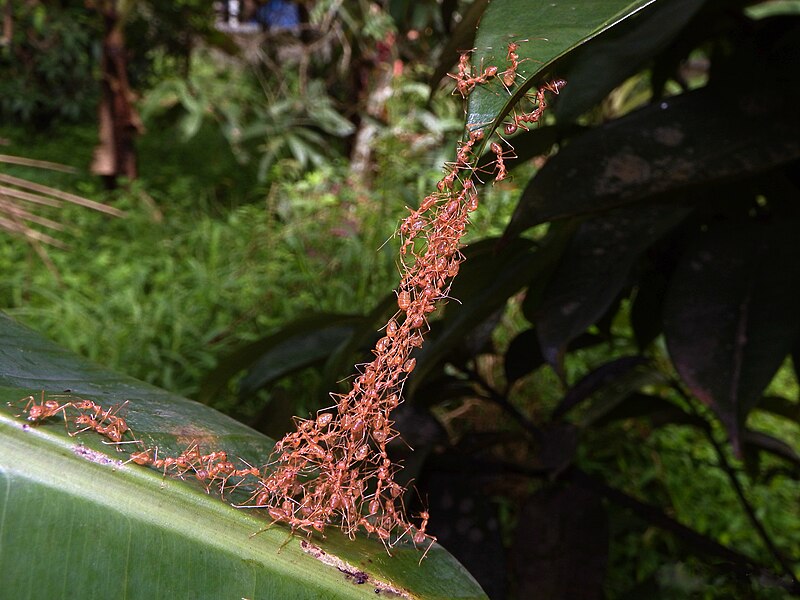When you walk through the forest or the city, do you usually look up? The usual thing is to look at where we are going or where we put our feet, but if you find yourself in the middle of nature, do not forget to observe the trees, perhaps you find yourself with an image as beautiful as the cover of this post: you are observing the crown shyness.
A BOTANICAL PHENOMENON
Less than 100 years ago, back in 1920, a botanical phenomenon that give us beautiful and impressive images of certain forests was observed for the first time. In 1955, the botanist Maxwell R. Jacobs, described this phenomenon as “crown shyness” after studying various populations of eucalyptus. The crown shyness is also known as canopy disengagement, canopy shyness or intercrown spacing.

This phenomenon consists in a limited growth of the canopy of the trees, in such a way that the leaves and branches of adjacent trees do not touch each other. This produces figures and patterns with the sky in the background when the trees are observed from the ground.
The canopy disengagement, among other themes, is explored in the documentary Once Upon a Forest.
WHY CROWN SHYNESS OCCURS?
The scientific community has not yet reached a consensus that explains the mechanism that gives rise to this phenomenon. A total of three hypotheses have tried to explain the crown shyness:
1. Friction hypothesis
The initial hypothesis of Maxwell R. Jacobs (currently barely accepted by the scientific community) explains that the friction of some branches with others, when the wind hits them, would limit the growth of the branches to avoid touching the neighboring trees, due to the damages produced by the abrasion.
2. Allelopathy hypothesis
The most supported hypothesis currently indicates that crown up has an allelopathic origin.
In botany, allelopathy is any effect that one plant transmits to another through the production of different chemical compounds, either causing a positive or negative effect on the other plant. These compounds are the so-called allelochemicals. In other words, plants and trees communicate with each other by chemical signals. This relationship occurs more frequently between trees and plants of the same species, although it also occurs between different species. To know in depth the process of allelopathy, we invite you to read the post Communication among plants: allelopathy.

3. Photoreceptors hypothesis
In addition to chemical signals, phytochrome photoreceptors (sensors of light capable of detecting the area of distant red light) possessed by trees and plants allow them to perceive the proximity of other individuals. Another type of photoreceptor detects blue light, which produces in plants and trees the avoidance of shadows produced by other individuals.

As a whole, the signals captured by these photoreceptors would provoke the response of the tree to move away from the adjacent one, which would allow it to obtain a greater quantity of light, which is essential for photosynthesis.
ARE ALL TREES “SHY“?
Crown shyness has been observed in certain European oak and pine species and tropical and subtropical species, such as some eucalyptus, species of the Dryobalanops genus, Pinus contorta, Avicennia germinans, Didymopanax pittieri, Clusia alata, Celtis spinosa, Pterocymbium beccarii, Picea sitchensis and Larix kaempferi.

In other species, the tops of the trees come to touch and even cross their branches, although the canopy (habitat that includes the tops of the trees) does not usually mix completely.
HYPOTHESIS ON THE ADVANTAGES OF THE CANOPY SHYNESS
The evolutionary sense of the timidity of the glass remains unknown, although botany has launched several hypotheses:
- It allows a greater penetration of light in the forest to perform photosynthesis more efficiently.
- It avoids damaging the branches and leaves when hit against each other in case of storm or gusts of wind.
- It prevent diseases, larvae and insects that feed on leaves from spreading easily from one tree to another.

For now, it seems that crown shyness is due to a relationship of collaboration between species for survival, rather than a competition (the popularly known as the “survival of thje fittest”). We will have to wait for future studies to shed a little more light on this still unknown phenomenon.


Thank you so much for your helpful information. I believe you will help me pass my Natural conservation course that I am currently under taking. Please send me the information on English. Thank you in advance.